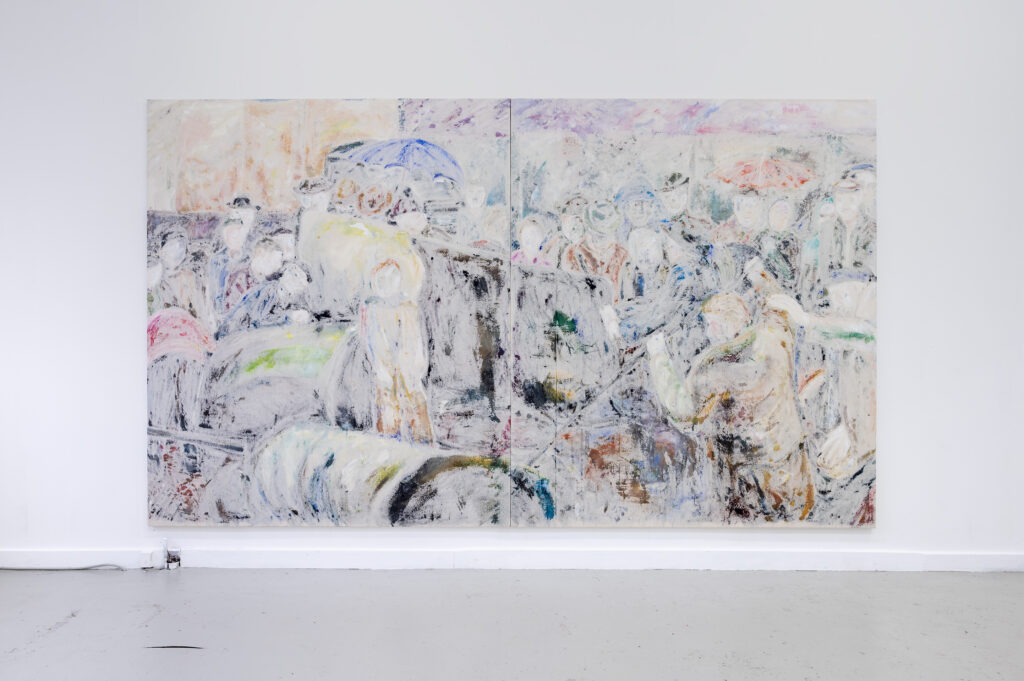-
The price is worth it
Acher
Boulevard d'Avroy 28-30
-
TO DO
Hilal Aydoğdu
100 Rue Saint-Gilles
-
V – 150360/1 p. 204, 265, 266
Dóra Benyó
1 Féronstrée
-
Fausse bonne nouvelle
Juan d’Oultremont
31b Rue de la Cathédrale
-
Et fouisse toujours on trouvera bien
Gaspard Husson
18 Rue de l'Etuve
-
La constellation du navire Argo
Sarah Illouz & Marius Escande
Hôtel de la Cour de Londres 40 Rue Hors-Château
-
One Line (… Better Than On – line!)
Marin Kasimir
31a Rue de la Cathédrale
-
Cityscape
Sarah Lauwers
29 Rue de l'Université
-
Traversées
Alexiane Le Roy
3 Rue de la Cathédrale
-
Mécanique d’un mur
Raphaël Maman
9 Passage Lemonnier
-
Vapeurs
Eva Mancuso
5 Rue Chéravoie
-
Don’t cry over spilllllled tears anymore
Francisca Markus
7 Rue Saint-Remy
-
Actions !
Maxence Mathieu
56 Rue Saint-Gilles
-
On ne peut rien faire d’autre que tenir debout
Élodie Merland
113 Rue de la Cathédrale
-
Travel Local, Buy Local
Oya
107 Féronstrée
-
Le vestiaire
Camille Peyré
85 Rue de la Cathédrale
-
22 empans et 1 palme
Leïla Pile
75 Rue Hors-Château
-
Chronique florale
Ionut Popa
101 Féronstrée
-
The Sunken Place
Louise Rauschenbach
4 Rue de la Cathédrale
-
Le temps d’une trace / La trace du temps
Florian Schaff Marvyn Brusson
1 Rue Courtois
-
Open closet archive 1995/2021/2023/2024
Bo Stokkermans
Passage Lemonnier, 37-39
-
Mutations x Urbaines
Adrien Mans Benjamin Ooms
17 Rue des Croisiers
-
Je m’organise…
Leen Vandierendonck
159 Féronstrée
-
Wer rettet die Welt
Paul Waak
16 Rue du Palais
-
Regarde… ce qu’il se passe à côté
Sculpture/Peinture B3 ESA Liège Melissa Andreia Alves ...
137-139 Féronstrée
-
Pauvre petit belge qui tremble
Paolo Gasparotto
25 Rue Saint Paul
Warning: Undefined array key "current_expo" in /var/www/clients/client3/web4/web/wp-content/themes/artaucentre/loop/vitrine.php on line 25

V – 150360/1 p. 204, 265, 266
#14
Dóra Benyó
Artist selected as part of the open call
3281 Féronstrée
Through video, performance and painting, Dóra Benyó draws on her own family history as source material for her work to address censorship and authority in Hungary during the Soviet era. She predominantly works with state archives files related to her grandfather, held by the former secret service. From a personal quest for belonging, Hungarian born but grown up in the Netherlands, she searches for traces of dictatorship left in her family. Using the position of the eternal newcomer she searches for traces of dictatorship left in her family, and questions how families and society processes the Eastern European dictatorial past.
The title V – 150360/1 p. 204, 265, 266 refers to the report from the Hungarian state security archive describing the activities of Dóra Benyó’s grandfather during the Hungarian Revolution of 1956. With trucks he collected food in Austria and brought it to the head of military in Budapest.
For Art Au Liège #14 Dóra paints a scenery similar to the one described in the report. The depiction is based on an archival picture found on the internet made during the Hungarian Revolution on which a group of people unload food from a truck. The audience will look at the backside of the painting that is facing the window and hanging from the ceiling. Only the reflection in the mirror on the vitrine wall can give the audience glimpse of the actual painting. By not showing the front side of the painting, Dóra censors the depiction and refers to the incomplete archival material while posing questions about how we relate to our histories and their (un)knowability.